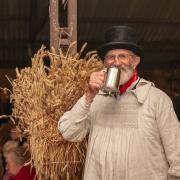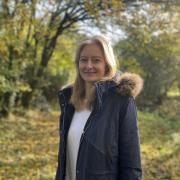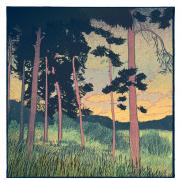History books (at least, until recent times) have often overlooked the role of women. But if you dig a little, fascinating tales come to light, not least here in the Cotswolds where unsung heroines, creative pioneers, and social and educational champions have all left legacies.
ASCOTT MARTYRS
The tale of the ‘Ascott Martyrs’ is little known beyond the Oxfordshire village of Ascott-under-Wychwood and the 16 women who were imprisoned in 1873 for supporting striking farm workers are unlikely heroines. Yet their experience threw a national spotlight on 19th-century rural oppression and in its own Cotswold way added momentum to the battle against social injustice and inequality.
In the months leading up to events, local agricultural union activity had been growing. Labourers in Ascott, unable to support their families on 10 shillings a week, asked Robert Hambidge at Crown Farm for a pay rise to 14 shillings and, denied, they went on strike.
When Hambidge brought in two teenagers from a nearby village to work in a field, they were met by some 40 Ascott women and, amid jostling, there was an impromptu call for the youths’ trousers to be removed – the two lads fled! Fanny Honeybone later recalled: “there was something of the idea of fun in what we did – certainly no intention to harm them”.
Hambidge and local magistrates took a different view and 16 of the women, charged with intimidation, were sent to Oxford Gaol for seven to ten days with hard labour (two women with babies were spared the labour).
The harshness of the treatment provoked rioting in Chipping Norton, letters to The Times and parliamentary debate, resulting in a reprieve of the ‘hard labour’ from Queen Victoria, though sentences had been completed by the time this came through.
On release the women were feted by the local union and, thanks to public donations, were each given £5.00. In the longer term, farm labourers got a wage rise, while more widely, the law would soon be changed to allow peaceful picketing, and the local magistrate system would be reviewed. The struggle against social inequalities continued.
Today the Ascott women’s names are recorded on seats around a commemorative tree on the village green, a book has been published, and The Ascott Martyrs Educational Trust keeps alive the story. ascottmartyrs.co.uk

ARTS & CRAFTS
It is difficult for any offspring to step out from the shadow of a famous parent, and the achievements of Mary ‘May’ Morris have certainly been obscured by her being the daughter of ‘Father of Arts & Crafts’ William Morris. Yet May was hugely talented in her own right, as an artist, embroiderer and jewellery designer / maker.
William Morris found his “heaven on earth” at Kelmscott Manor from the 1870s, and the Cotswolds became the great rural centre for Arts & Crafts practitioners. May relished many childhood adventures, including to Broadway Tower where “clean aromatic wind blew the aches out of our tired bodies”.
In 1885 at the age of 23, May took over the embroidery section of Morris & Co from her father, worked on company commissions like wall hangings, and designed items ranging from tablecloths to cushion covers. Her book, Decorative Needlework, appeared in 1893, she taught and exhibited, and in 1907 she co-founded the Women’s Guild of Arts – her friend, the acclaimed Arts & Crafts bookbinder Katharine Adams, whose studio was in Broadway, would become a guild president.
In later life and true to the social conscience that infused the Arts & Crafts movement, May did much to enhance the village of Kelmscott, from founding Kelmscott WI to building a village hall (designed by Ernest Gimson). Thanks to her bequest of Kelmscott Manor to Oxford University, who passed it to the Society of Antiquaries, we can all visit “the loveliest haunt of ancient peace”.
Women’s contributions to the Arts & Crafts movement can also be overlooked when part of a husband-and-wife team. Such has tended to be the case with Gloucestershire-based Alfred and Louise Powell, who both worked with Wedgwood, hand-painting ceramics. They painted designs onto furniture, too; Louise’s work noted for its bold rhythmic shapes and use of colour.
Louise gave encouragement to embroiderer Eve Simmonds whose exquisite work reflected her love of flowers. Based at Far Oakridge, Eve and her woodcarver husband William ran a much-loved puppet theatre that toured to country houses. Eve made the puppets’ costumes and played the spinet and virginals, and they were described as “two of the happiest people one can ever imagine. So little money to live on but just enough; they wanted no more.”
It was at the home of Eve Simmonds that Dorothy Larcher “became instantly very excited” when she first saw a piece of cotton print by Phyllis Barron. The pair soon met, and with their distinctive designs, subtle colours and quality materials, Barron and Larcher became leading lights in the revival of hand block-printing in the 1920s and 1930s; customers included royalty.
Seeking “more space in the country”, the pair moved from London to Painswick where Barron indulged her love of mixing dyes, particularly indigo. Parties they threw were an opportunity to obtain male urine for the indigo vat and became known as Barron’s Piddle Parties!
Find more Arts & Crafts ‘herstory’ at Kelmscott Manor, kelmscottmanor.org.uk; The Wilson, cheltenhammuseum.org.uk; Court Barn, courtbarn.org.uk

COMMUNITY CONSCIENCE
Emma Dent of Sudeley Castle was a genuine force of nature who threw herself into the restoration of the castle in Victorian times. Her purposeful energy also spread wider as she and her husband John forged strong links with Winchcombe – she provided the town’s first piped water supply in 1887, to celebrate Queen Victoria’s Golden Jubilee, built almshouses, a school, and helped to renovate the parish church.
Keen to encourage people to further themselves, Emma would trudge across the fields to Winchcombe to teach at Night School, “with a boy to carry a lantern to prevent her stumbling over sleeping cows”. In time she rebuilt the entire road from Winchcombe to the castle.
The story of Emma’s friend Dorothea Beale, a pioneer of women’s education, was told in the March issue of Cotswold Life. Succeeding Beale as principal of Cheltenham Ladies’ College, Lilian Faithfull continued the good work, also looking beyond college walls in exhortations that: “There is active work to be done. We are not worthy to live in any society taking everything and giving nothing.”
Women’s rights advocate, magistrate, social worker, humanitarian, Faithfull was true to her words. Witnessing the sufferings of elderly people in Cheltenham, particularly widowed or single women retired from teaching or nursing who had to vacate work-related accommodation, she created the Lilian Faithfull Care charity in 1946. The charity has grown to include six care homes and an adult day care hub in Gloucestershire.
Sudeley Castle, sudeleycastle.co.uk; Cheltenham Ladies’ College, cheltladiescollege.org; Lilian Faithfull Care, lilianfaithfull.co.uk
Dig a little and many more pioneering Cotswolds women will step into the limelight as they deserve.



























